This is a brief update on the return of our people last weekend from Gulf of Guinea III (B). They were the marine component of the 2008-2009 expeditions (see Send in the Marines). The focus of four of the group was the waters of Príncipe, the much older of the two islands. The two fish people, Dr. John McCosker and David Catania went a week earlier to dive in São Tomé; neither had been to the islands before, and much of our earlier fish work was freshwater in nature. After the second group of four arrived, the whole expedition flew to Príncipe courtesy of SCD, one of our main sponsors (see “Partners,” below).
As I posted earlier, our first nudibranch (sea slugs) specialist, Dr. Marta Pola-Perez, was on the GG III (B) expedition. Below are photos of a few of the critters she found.
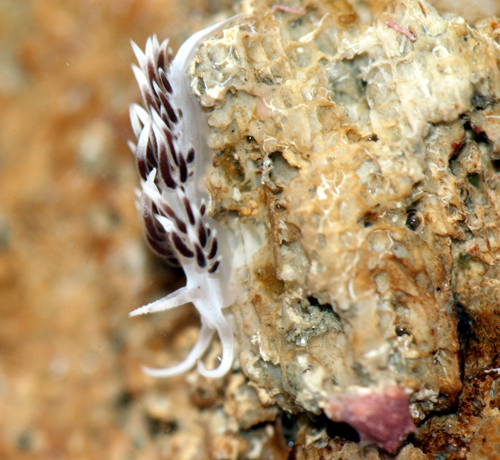
A possible new species of Phidiana, Principe. Pola-Perez phot. GG III
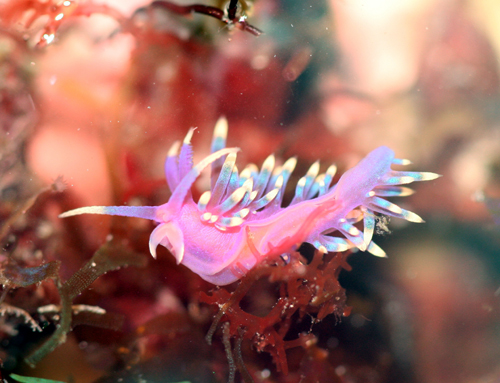
Flabelina arveloi, Principe. Pola-Perez phot. GG III
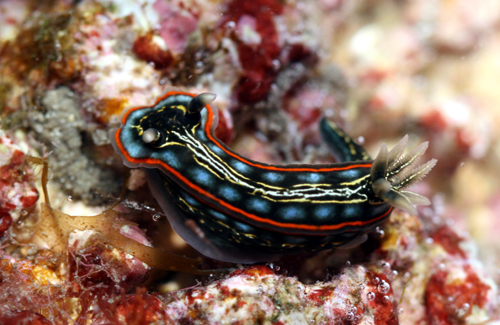
Hypselodoris bilineata, Principe. Pola-Perez phot. GG III
As I wrote before, Dr. Bob Van Syoc, his graduate student, Dana Carrison and Dr. Gary Williams are looking at corals and barnacles and the association between the two life forms. Dana’s dissertation topic concerns the relationship between what we think is a new species of barnacle and one of Gary’s octocorals (sea fans).
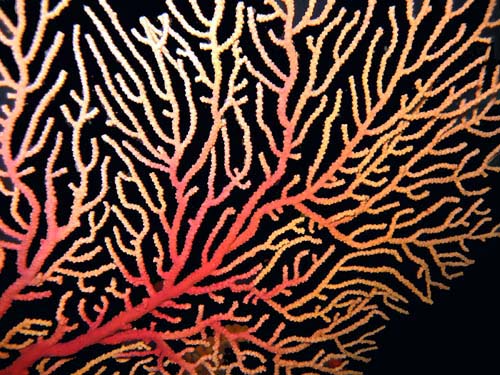
A Sao Tome sea fan (Eunicella). G. Williams phot. GG III
This group did quite well on Príncipe; Bob and Dana collected a barnacle species previously known only from the Azores and Cape Verde Islands, Megabalanus azoricus, thus adding to the island diversity list. Gary thinks he has now collected more species of octocorals in São Tomé and Príncipe than are found on the Galapagos Islands.

Grad student, Dana Carrison, with sea fan on Principe. B. Van Syoc phot. GG III
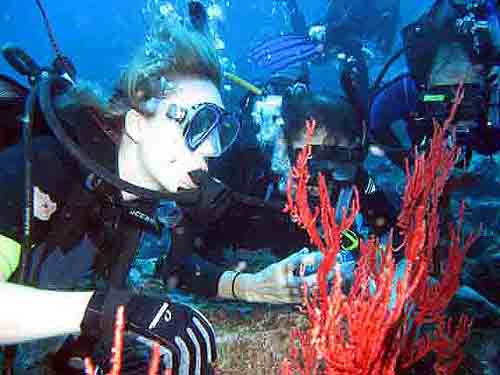
Dana, Gary Williams and John McCosker, Principe. B. Van Syoc phot. GG III
Of particular interest is that Bob found a species of shore barnacle at Bom Bom on Príncipe otherwise known only from South Africa. He thinks it was probably brought in by barge carrying building supplies. So far it seems to be confined to the vicinity of the Bom Bom pier.

Bom Bom pier at night, Principe. Weckerphoto GGIII
John and Dave also well. Although they said the diving was “spotty” they did manage to sample a bunch of neat stuff, including at least one definite new species.
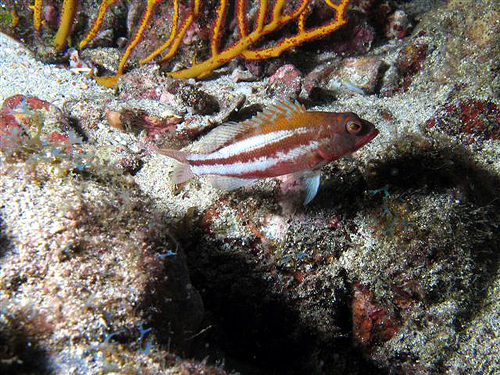
A new species of Serranus from both islands. D. Catania phot. GG III
Ichthyologists frequently find new species just by exploring fish markets. Below is a pot of jacks for sale which John and Dave cannot identify to species. They will need to compare the DNA of these fishmarket critters with other known species in the genus.
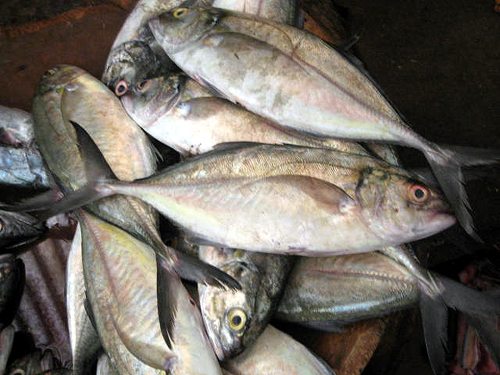
Unidentified species of Caranx in the fishmarket. J. McCosker phot. GG III
As I have written before, another way for ichthyologists to sample the marine fauna is to get permission to buy odd specimens directly from beach seiners.

Sao Tome beach seine. J. McCosker phot. GG III]
This group was fishing in the bay near Omali Lodge (Marlin Beach Hotel), and like Dr. Iwamoto did during GG I, John and Dave dealt directly with the seiners for unique specimens. Detirmining the identity of all of this material takes a great deal of time, but for now it looks as though the Marines of GG III (B) did quite well.
I received some great news while the group was gone. Recall that I mentioned the marine group was going to collect some freshwater prawns for DNA work in a project by high school student Alex Kim in Virginia. Well, the group got the prawns and by now they are back east being investigated by Alex and his mentor from George Mason University, Prof. Patrick Gillevet. But the great news is that Alex is one of 40 finalists in the INTEL SCIENCE TALENT SEARCH; his project and scholarship are obviously gaining recognition, and we at the Academy are proud to be able to help out.
Alex has his own website: http://amphidrome.wordpress.com/
Here’s the parting shot:
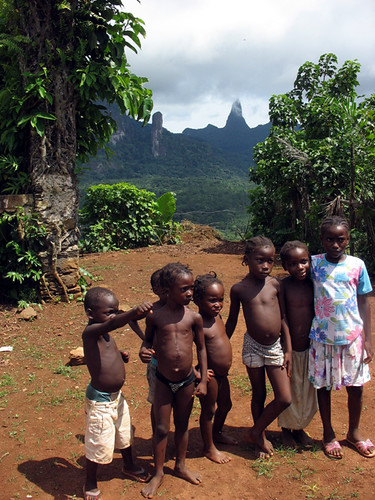
Growing up on Principe. R. Wenk photo. GG III
PARTNERS We gratefully acknowledge the support of the G. Lindsay Field Research Fund, Hagey Research Venture Fund of the California Academy of Sciences, the Société de Conservation et Développement (SCD) for logistics, ground transportation and lodging, STePUP of Sao Tome http://www.stepup.st/, Arlindo de Ceita Carvalho, Director General, and Victor Bomfim, Salvador Sousa Pontes and Danilo Bardero of the Ministry of Environment, Republic of São Tomé and Príncipe for permission to export specimens for study, and the continued support of Bastien Loloumb of Monte Pico and Faustino Oliviera, Director of the botanical garden at Bom Sucesso. Special thanks for the generosity of private individuals, George F. Breed, Gerry F. Ohrstrom, Timothy M. Muller, Mrs. W. H. V. Brooke and Mr. and Mrs. Michael Murakami for helping make these expeditions possible.